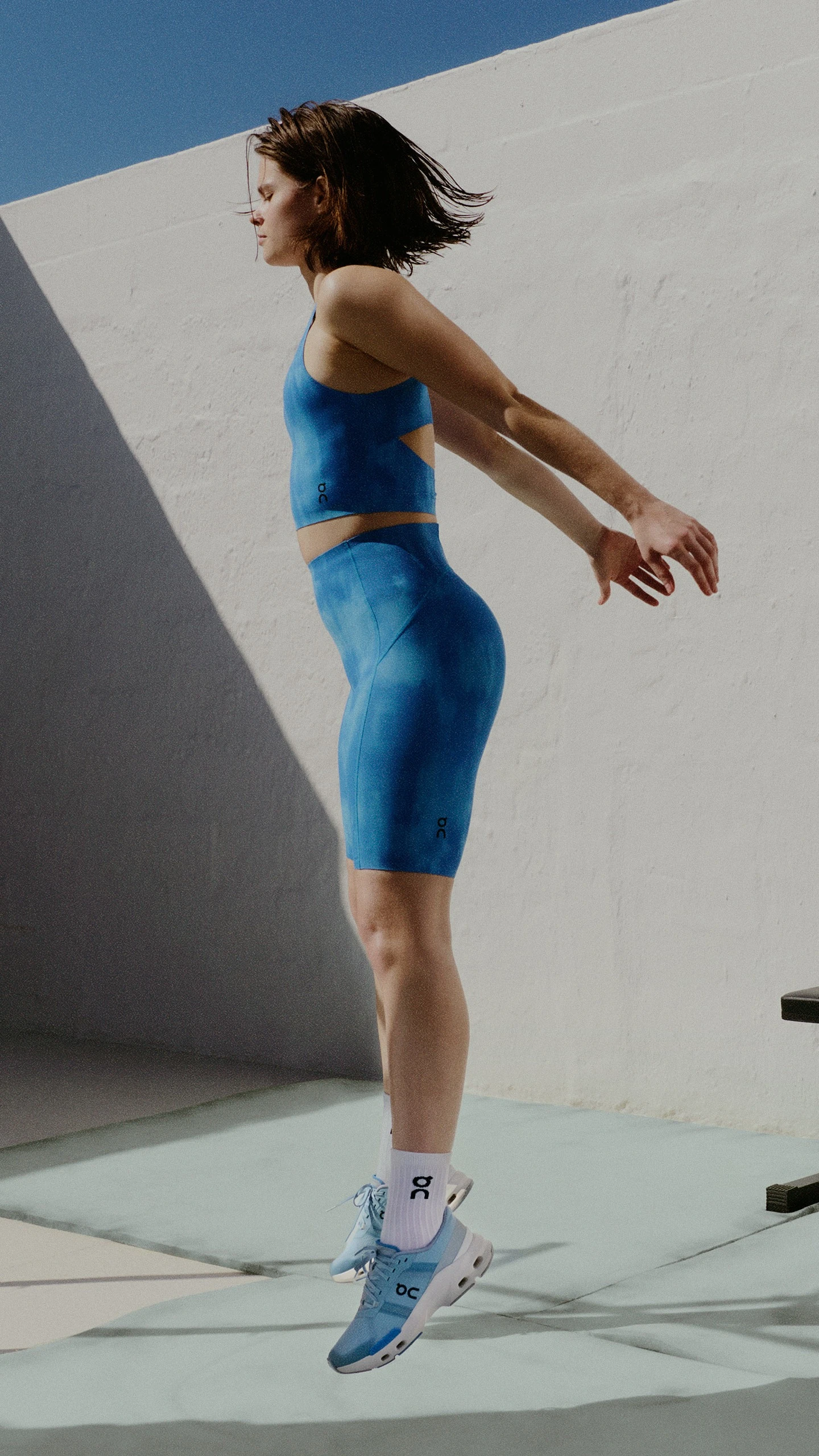

Want to move quicker, jump higher and boost power? With insight from fitness trainer, Roy Chan, discover how plyometric training can help you do all that and more.


Plyometrics are a shortcut to moving stronger, faster and with more control.
As fitness trainer Roy Chan puts it: “Whether I’m training myself, working with athletes, or working with the general population, the ability to absorb and produce force quickly through the ankle is key.”
You get faster. More agile. You move better, coordinate better. And help to reduce your risk of injury.
That ability to create max force in minimal time is what makes plyometrics so powerful. Whether you’re chasing a marathon PR, running your first 5K, or looking to feel sharper and more agile, sprinkling a few plyometric drills into your week can pay off.
Think of plyometrics as training your muscles to fire like a spring. High-intensity movements (jumps, bounds, hops) done at near-max effort teach your body how to generate force, fast.
They work best in short bursts, slipped into the training you’re already doing. Try squat jumps before a trail run to wake up your legs, or grab a jump rope after intervals to sharpen coordination on lactic legs.
And they’re not just for pros. As Chan explains, plyometrics can help anyone move with more power, resilience and efficiency.
A jump might look like one smooth move, but under the surface it’s a lightning-fast, three-part cycle happening in milliseconds. Each phase teaches your muscles to absorb, stabilize and rebound with power.
Eccentric: The load. Like lowering into a squat before takeoff, your muscles stretch and store energy, priming your body for what’s next.
Amortization: The pause. Just a split second where your body stabilizes. The quicker you move through it, the more power you’ll have on the push-off.
Concentric: The release. Muscles contract, stored energy fires and this is where you jump, bound or explode off the ground.
You don’t need to memorize the science, but knowing the rhythm (load, pause, release) helps you train smart and squeeze more power from every rep.
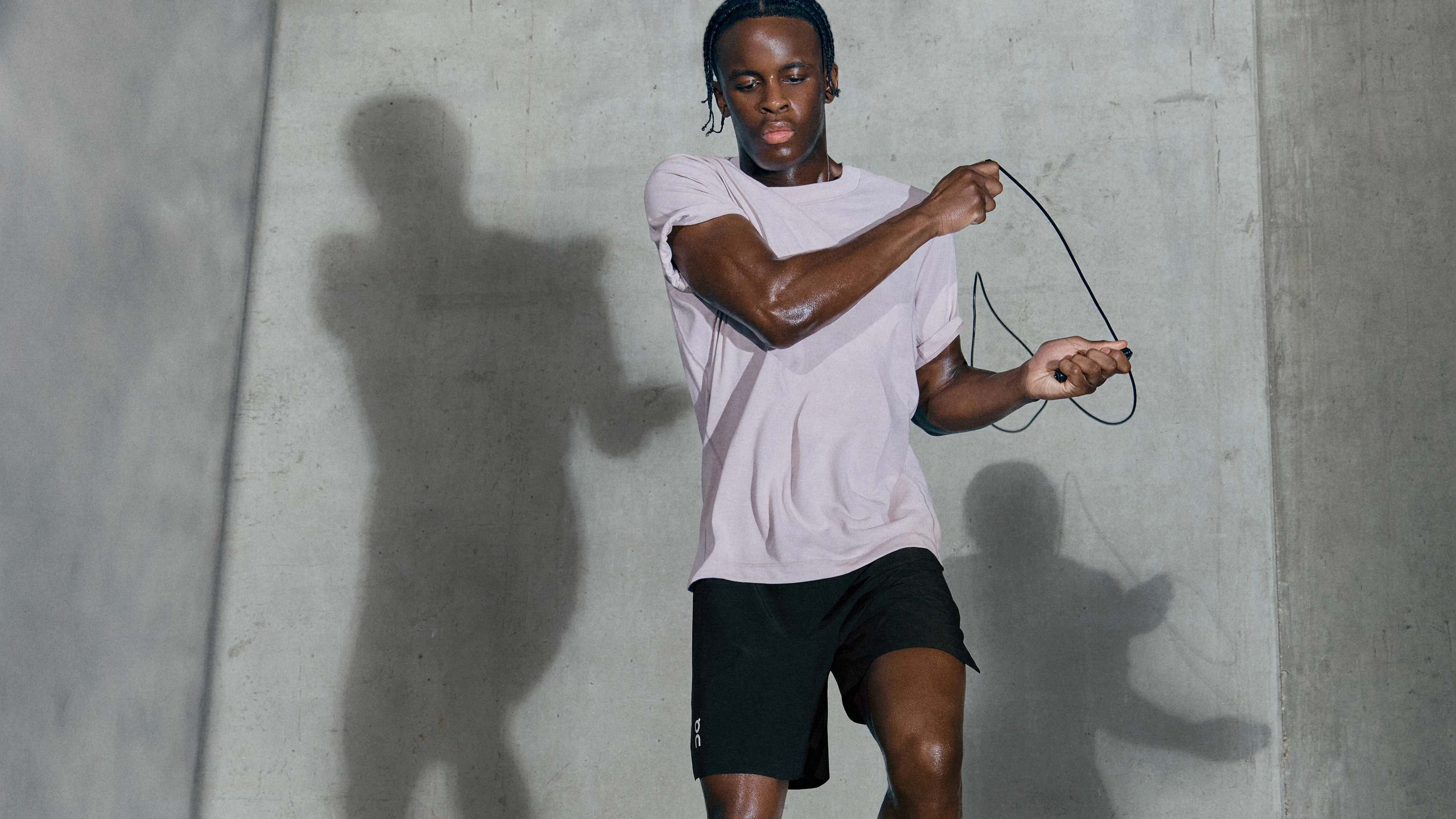

Plyometric training helps athletes move with more power and precision when it counts. Runners get sharper takeoffs. Baseball players swing with more force. Any sport that relies on quick bursts of energy can benefit.
But plyometrics aren’t just for athletes. Everyday movements – climbing stairs, reacting to a slip – become easier when your muscles are more responsive. By targeting your fast-twitch fibers, plyometrics help you accelerate quicker, change direction sharply, and sustain speed longer.
For Chan, one of the most effective tools is contrast training. “This method pairs a heavy strength exercise with a biomechanically similar plyometric movement,” he says.
For example, he’ll follow a heavy squat with jump squats to enhance power and neuromuscular efficiency by taking advantage of post-activation potentiation (PAP). This just means the heavy set primes his nervous system to fire faster and more forcefully during the bursting movement.
Beyond performance, plyometrics also protect your body over time. Bone density naturally declines with age, raising fracture risk, especially for women. According to the Bone Health and Osteoporosis Foundation, up to 50% of women and 25% of men over age 50 will break a bone due to osteoporosis. Building and maintaining strong bones through plyometrics can help reduce the chance of falls, fractures and mobility loss later in life.
Exercise physiologist Dr. Stacy Sims puts it simply: just ten minutes of jump training, three times a week. On the Huberman Lab podcast, she shared, “over the course of four months, this type of training [helped] people go from being osteopenic to normal bone density.”
It doesn’t take much. Just a few short sessions a week can make you faster, stronger and more resilient. Not just in sport but in everyday life.
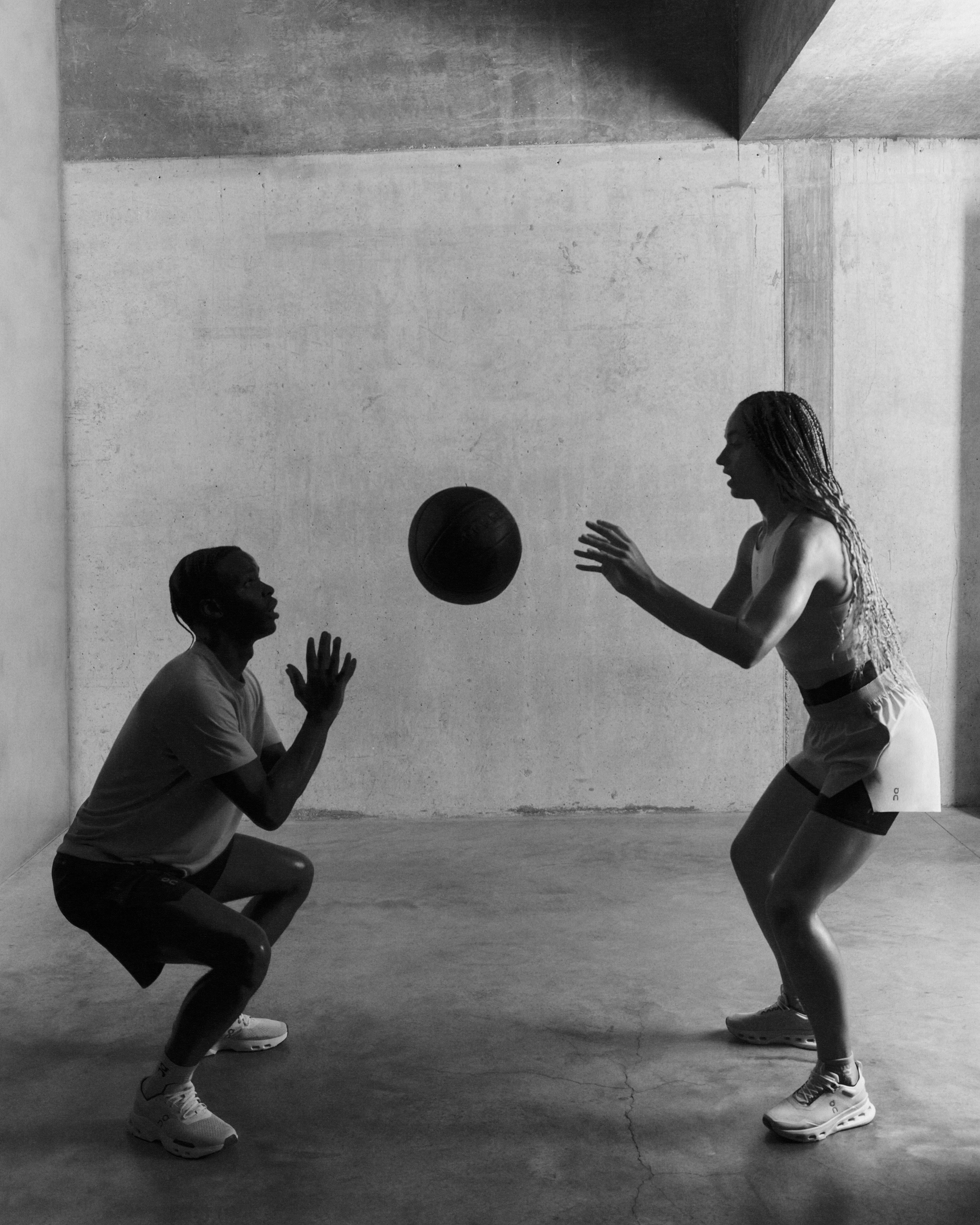

Plyometrics generally fall into four categories: bilateral, unilateral, extensive and intensive.
Because they ask a lot of your body, start small. Begin with lower-impact versions, focus on control, and build gradually. With plyometrics, less is really more. One to two short sessions a week, and three to six sets of two to five reps. Keep your form sharp – that’s where the gains happen.
For beginners, Chan points to pogo jumps. “They’re a fundamental plyometric exercise that are highly effective for developing power and lower-body stiffness,” he says. He includes them in every program because “they’re simple yet challenging,” making them useful for both beginners and advanced athletes.
Where both feet leave and land together. Stable, controlled and a great starting point.
Try: box jumps, squat jumps, depth jumps, lateral jumps.
Single-leg movements that challenge balance, coordination and control. Ideal for runners since they mimic the demands of running and help correct strength imbalances.
Try: single-leg box jumps, hurdle hops and single-leg bounds.
Lower intensity, higher volume. Builds endurance and rhythm.
Try: skipping drills, jumping rope.
High intensity, low volume. Trains your muscles to generate force quickly. Great for building raw strength and speed.
Try: squat jumps, box jumps, depth jumps.
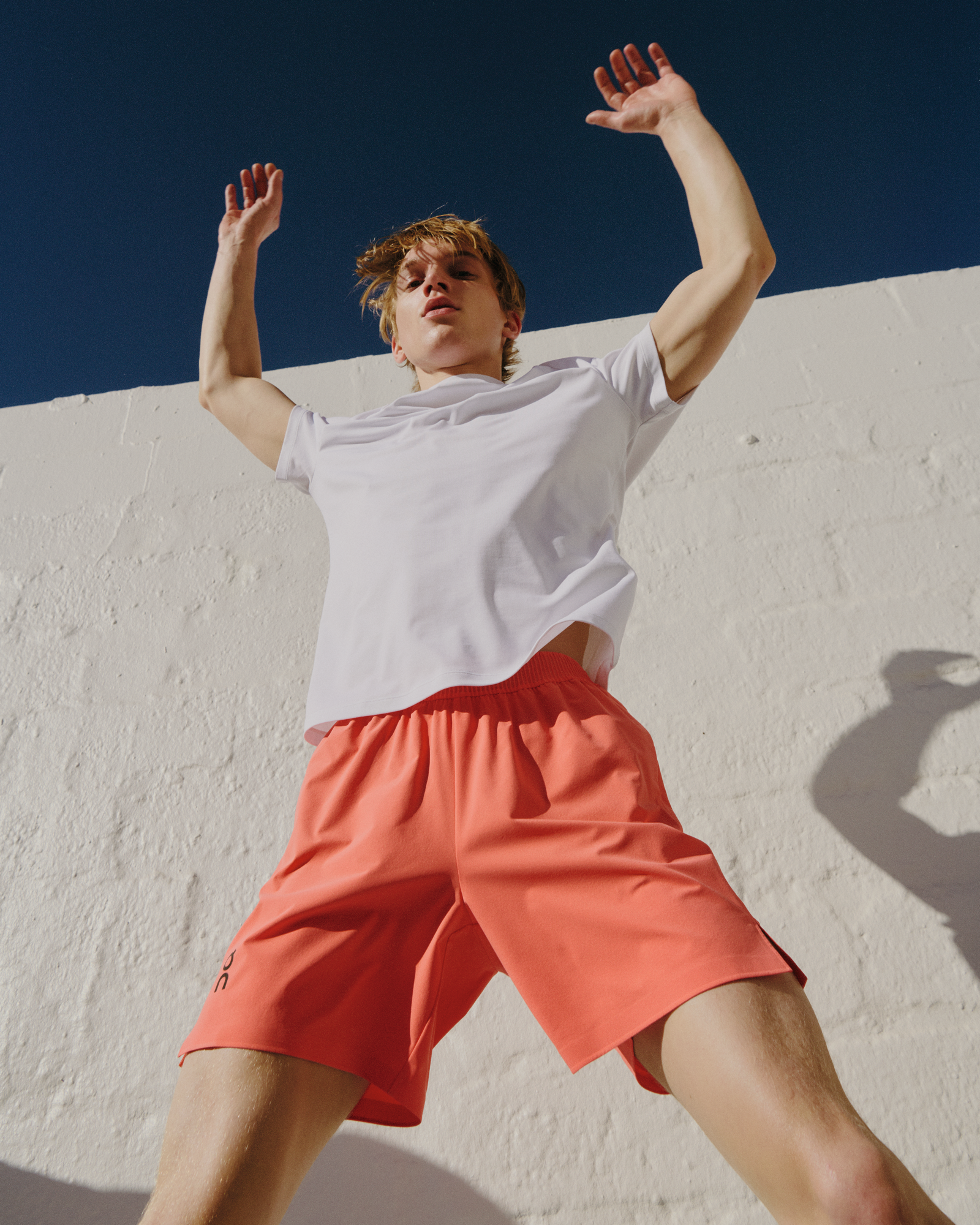

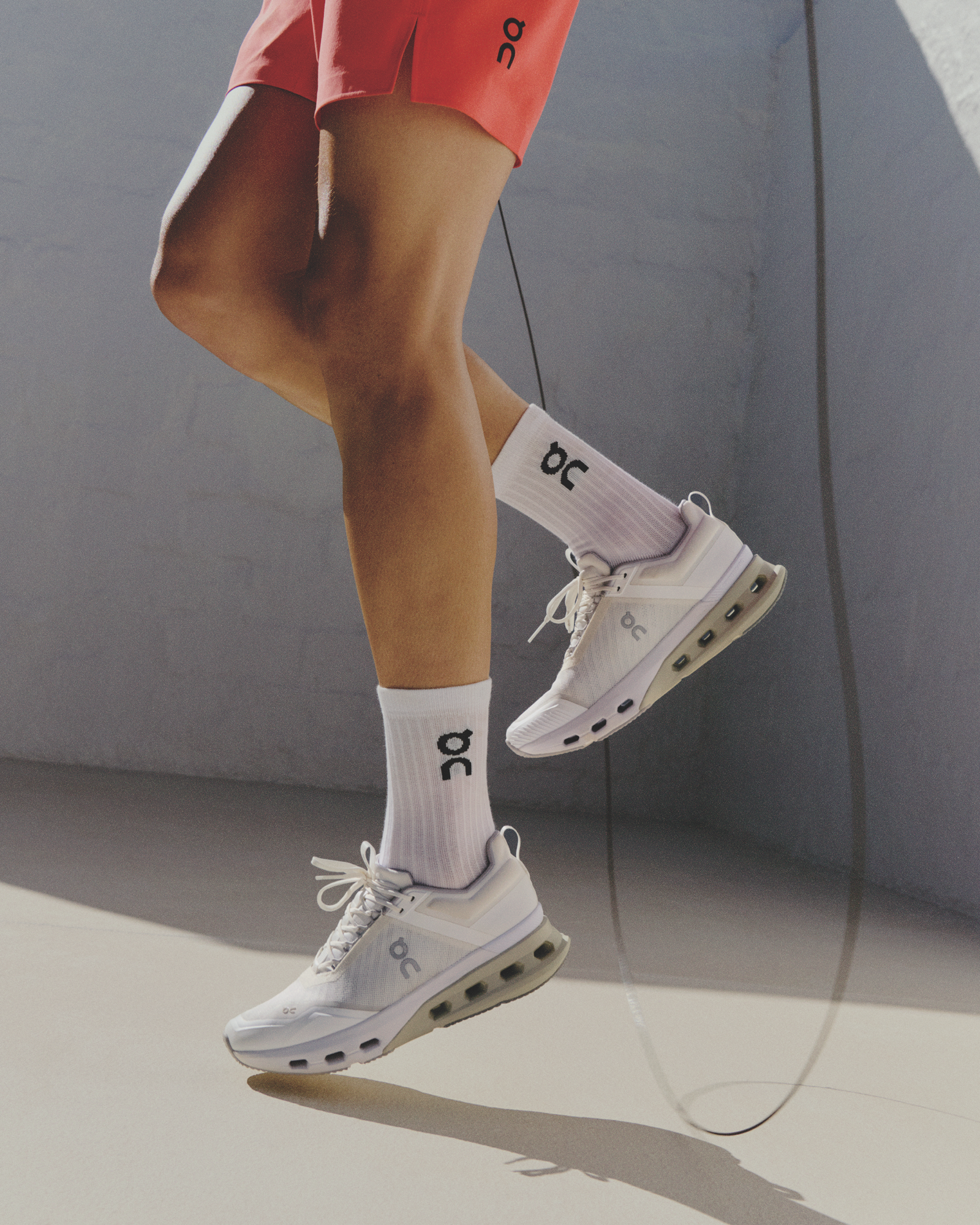

Plyometrics are high impact, which means your warm-up matters. Skip static stretches and focus on dynamic moves that boost blood flow and prime your joints.
Walking lunges, leg swings and shoulder rolls are simple ways to get your body ready. Just a few minutes can prepare your nervous system so you move with more control, power and intent.
For beginners or anyone returning after a break, ease in. “While plyometric exercises are effective, they can be risky for beginners,” says Chan. “The connective tissue around the ankle complex needs time to strengthen and adapt to the stresses that plyometrics demand. Start slowly and focus on control, gradually increasing load, volume, and complexity.”
His go-to starting points: low-impact movements like jumping jacks, skips, and pogo jumps. Keep the sessions short, with plenty of rest between sets. Quality matters more than quantity.
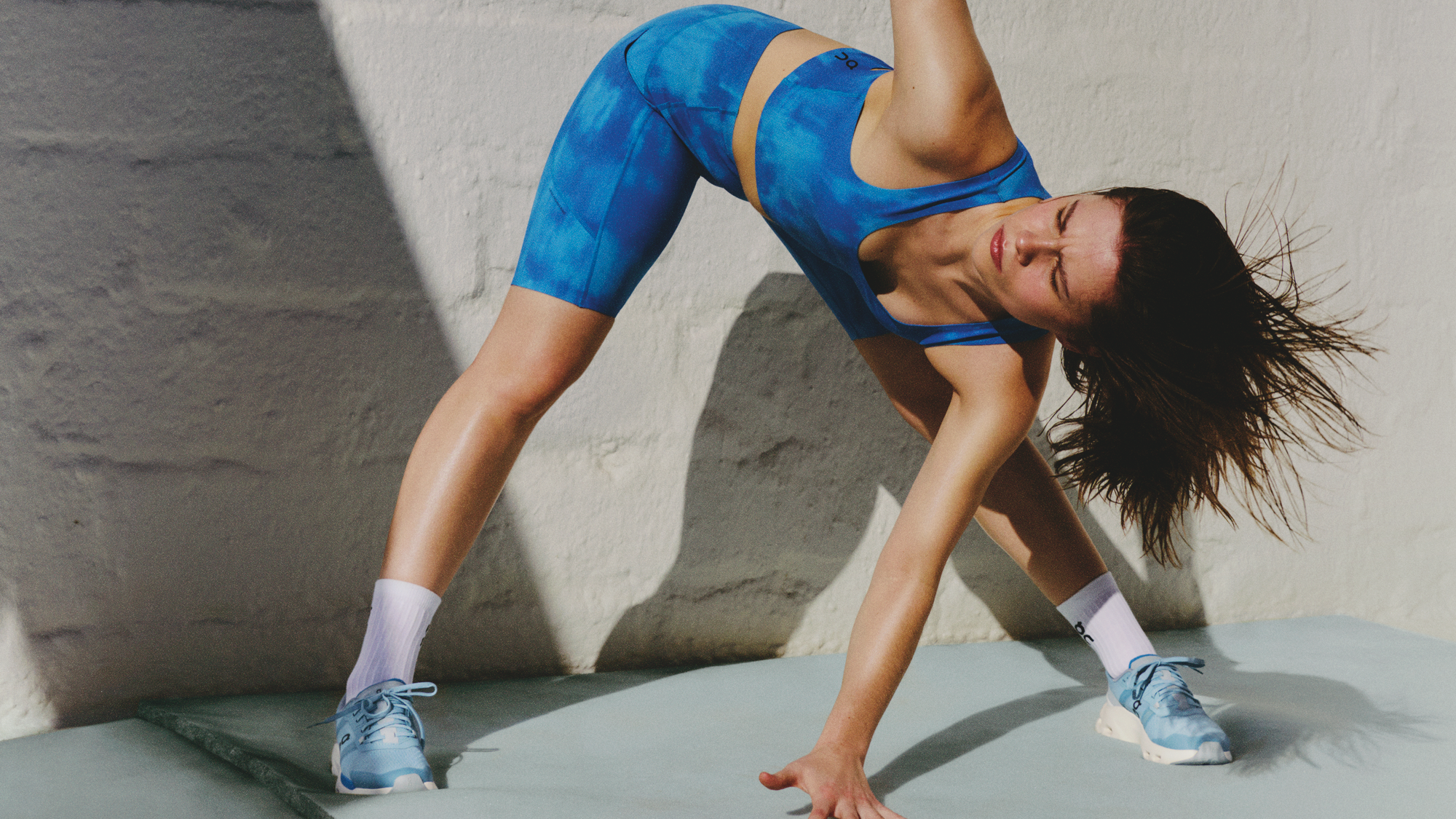

The right gear can make plyometric training feel smoother, safer and more effective. Start with shoes: look for responsive cushioning, solid grip and a wider toe box for stable grounding, like the Cloudpulse. Then keep the rest simple: lightweight, moisture-wicking pieces, like the Train Tights and Train Tank.
“I look for shoes that move with the foot,” says Chan. “Minimal cushioning, low to the ground, and a natural feel that allows the body to function as it’s designed. Good shoes should feel like an extension of your feet, not like a cast.”
You don’t need equipment to do plyometrics, but the right tools can unlock new moves and keep training fresh. A few worth adding to your kit:
- Agility ladder: Quick-feet drills and low-impact bounds to sharpen coordination.
- Cones or markers: For jump sequences and directional bursts.
- Jump rope: Builds rhythm, timing and cardio with easy, high-rep movements.
- Medicine ball: Resistance for throws, slams and full-body rotational movements.
- Plyometric boxes: For box jumps, depth jumps and step-down drills.
- Supportive training shoes: Cushion impact and keeps you steady.
- Resistance bands: Add challenge to lateral bounds and squats.
- Workout mat: Protects joints and softens landings on hard floors.
Adding a few plyometric moves into your week can build sport-specific strength and help you stay mobile as you age. They key is starting smart: one to two short sessions a week, low reps, and sharp form. Training with a partner can help too. You’ll push harder, stay accountable and make the workout habit easier to stick with.